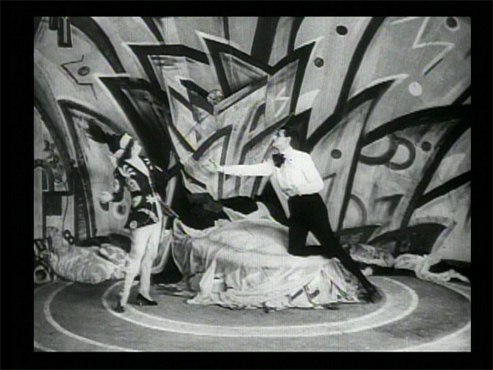German films were very few during the start of the World War I. German film industry was being dominated by foreign films such as French, American, Italian and Danish films. America and France banned German films, but the German film industry could not do the same to the American and French films because there will be scarce in films.
To fight these domination of foreign films, the government started to support the film industry, thus signaled the birth of German Expressionism. UFA (Universum Film Aktiengesellschaft) was established in 1917 to promote pro-war films.
After the militarist propaganda appeared, German films focused on three genres: adventure serial, featuring spy rings, clever detectives or exotic settings.
Despite negative judgement of America, England and France against German films, these films were able to break into the international market. Ernst Lubitsch's Madame Dubarry helped to reopen the world film market industry to Germany. In 123, Lubitsch became the first German director to be hired in Hollywood.
 |
| As the girl leans, she blends with the curve t\at the background. still from Genuine. Photo from Silent Era.com |
German Expressionism is a highly stylized artistic movement that gives more emphasis on emotions rather than realism. German expressionism relies heavily on mise-en-scene. Set designs are highly elaborated and creative. There is a sharp contrast between lights and shadows. Characters merge within the setting. In German Expressionist film, nothing seem to be real, characters make up their own word.
One of the first films of the movement, The Cabinet of Dr. Caligari, the classic example of the movement, became the very definition of a German Expressionism film. The Cabinet of Dr. Caligari is about a traveling magician with a hypnotized servant who does his master's murderous bidding under the cover of the night. (Kolar, n.d.) This film used spiky shapes, over the top make ups, creative and unrealistic two dimensional set designs. Dr. Caligari is bizarre, unusual and horrific; perfectly defines what German Expressionism is.
 |
| still from The Cabinet of Dr. Caligari photo from Mubi. |
From 1919 to 1926, German Expressionism is a short lived movement. Because of the popularity of German Expressionism, a lot of personnel were lured to go to Hollywood. Some stayed, but when the Nazi regime gained complete control over the nation, they all left and went to Hollywood. Even if German Expressionism already ended in the country where it started, German Expressionism continued to flourish in Hollywood. And even up to this day, German Expressionism is still present in the world of films.
-----
Kolar (n.d.) German Expressionism: The World of Light and Shadow [Web log post] Retrieved from http://mubi.com/lists/german-expressionism-the-world-of-light-and-shadow




No comments:
Post a Comment